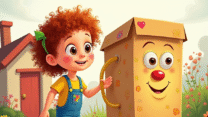
How to Help Toddlers Gently Learn to Calm Themselves
As any parent knows, toddlers feel big emotions—and they feel them loudly. From sudden tantrums to meltdowns over the “wrong” color cup, it can feel overwhelming. But teaching toddlers how to calm themselves is not only possible—it’s essential for their emotional development. The key is doing it gently, with empathy, consistency, and age-appropriate strategies.
Here’s how to help toddlers develop self-soothing skills, without punishment or pressure.
Why Do Toddlers Struggle to Self-Soothe?
Before diving into calming techniques, it’s important to understand what’s going on in a toddler’s brain. Toddlers:
- Are still developing emotional regulation
- Have limited impulse control
- Struggle to verbalize feelings
- Learn primarily through modeling and repetition
Expecting them to “just calm down” is unrealistic. Instead, they need gentle guidance and consistent tools to build this skill over time.
Step-by-Step Guide to Helping Toddlers Calm Themselves Gently
1. Stay Calm Yourself
Your calm is contagious. When your toddler is overwhelmed, they’re looking to you—even subconsciously—for cues. Speak slowly, breathe deeply, and lower your voice. This models what calm looks and feels like.
Try saying:
“I see you’re upset. I’m here, and you’re safe. Let’s breathe together.”
2. Name the Emotion
Toddlers often lash out or cry because they don’t know what they’re feeling—or how to express it.
Example:
Instead of “stop yelling,” try:
“You’re feeling really mad because we had to leave the park. That’s hard.”
Naming emotions helps children understand and label their feelings, which is the first step to managing them.
3. Create a Calming Space
Designate a cozy corner or calming space—not as punishment, but as a retreat. Include:
- Soft pillows or stuffed animals
- Books or sensory toys
- A calming jar or glitter bottle
- Visual calm-down cards
Bonus Tip: Let your toddler help decorate it. Ownership helps them feel safe using it.
4. Teach Simple Calming Tools
Start practicing calming tools during peaceful moments—not just in the heat of a meltdown. Toddlers need repetition and familiarity.
Calming techniques for toddlers:
- Deep belly breaths (“Smell the flower, blow out the candle”)
- Counting to 5 slowly
- Hugging a stuffed animal
- Squeezing a stress ball
- Listening to gentle music
- Using calming visuals like a “feelings chart”
5. Practice Through Play
Use role-play with dolls, puppets, or pretend play to practice calming strategies.
Example:
“Oh no! Teddy is sad because he dropped his snack. What can Teddy do to feel better?”
Play is a safe and effective way for toddlers to learn emotional regulation without pressure.
6. Be Consistent—but Flexible
Consistency builds trust, and trust calms the nervous system. Stick with your routines and responses, even when it feels repetitive.
That said, be flexible when needed. Some days, your toddler may need more cuddles than counting. Let their cues guide you.
7. Praise the Effort, Not Just the Outcome
Celebrate every step toward self-regulation. Even if your toddler only takes one deep breath before melting down, that’s progress.
Try saying:
“You were really upset, and you tried to breathe. That’s amazing!”
Positive reinforcement strengthens the behavior and builds confidence.
Final Thoughts
Helping toddlers learn to calm themselves doesn’t happen overnight. It’s a process of modeling, teaching, and repeating. But over time, with patience and gentle guidance, your child will begin to build the lifelong skill of emotional regulation.
Remember: You’re not just managing meltdowns—you’re shaping resilience, empathy, and inner calm.
How Storybooks Teach Self-Calming
Books can:
- Show characters using breathing, counting, or cozy spaces
- Offer predictable, comforting routines through rhythm and repetition
- Give toddlers new emotional words like “worried,” “overwhelmed,” and “calm”
- Teach toddlers that all feelings are okay—but not all reactions are helpful
Reading about calming behavior during a quiet moment helps toddlers recall those strategies when they’re upset.
What Parents Can Try
- Read calming books as part of your daily routine—not just during meltdowns.
- Point out when characters use a calm-down tool: “Look, Zara is taking deep breaths.”
- Create a calm-down corner with visuals from the story. Toddlers often calm faster when they can relate it to a favorite book.
- Use the same words the story uses. Consistency helps toddlers internalize the pattern: “Breathe in like Milo… and out.”
Featured Storybook: Milo Finds His Calm-Milo’s Mad Moments

Milo gets overwhelmed at a noisy birthday party. Instead of lashing out, he finds a quiet spot, holds his special rock, and breathes slowly.
This story:
- Teaches three toddler-friendly calming strategies
- Uses a gentle, soothing rhythm
- Ends with a “You Can Calm Too” reflection page
More Books That Support Self-Calming
- Calm-Down Time by Elizabeth Verdick – simple and toddler-focused
- Breathe Like a Bear by Kira Willey – mindfulness for little ones
- A Little Spot of Calm by Diane Alber – visual and engaging with clear tools













